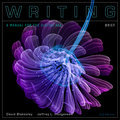
WRITING: A MANUAL FOR THE DIGITAL AGE, BRIEF 2nd Edition is the rhetorical handbook for composing in the 21st century. Blakesley and Hoogeveen place students' writing front and center with an innovative page format that keeps students' attention focused on their own writing and on activities, checklists, projects, and visual aids that help them write. The page design and innovative visuals make information about writing, reading, research, documentation, technology, and grammar easy for students to access and understand. the importance of the rhetorical context at the start of any writing project. Because writing and reading occur both in print and online, WRITING: A MANUAL FOR THE DIGITAL AGE prepares students to work with images, audio, video, and print. "Technology Toolbox" features throughout, as well as two dedicated parts of the book (Parts 6 and 7), teach students how to compose with technology intelligently. A newchapter on Writing in Online Courses, the first of its kind in a handbook, will guide students in addressing this new but increasingly common context for writing. INDICE: Part I: MANAGING YOUR WRITING. 1. Writing and Rhetoric in Context.2. Inventing and Developing Content. 3. Revising, Editing, and Proofreading. Part II: READING AND WRITING CRITICALLY. 4. Reading Critically. 5. Reading Literature Critically. 6. Reading Images Critically. 7. Writing Arguments. 8. Writing for Business and the Workplace. Part III: CONDUCTING RESEARCH. 9. Conceptualizing the Research Project. 10. Online Research. 11. Library and Field Research. 12. Using Source Ethically. Part IV: MLA STYLE. 13. MLA Documentation. Part V: APA, CMS, CSE, AND CGOS STYLES. 14. APA Documentation. 15. CMS Documentation. 16. CSE Documentation. Part VI: DESIGNING AND PRESENTING INFORMATION. 17. Using Visuals to Inform and Persuade. 18. Desktop Publishing and Graphic Design for Writers. 19. Designing Interactive Oral Presentations. Part VII: WRITING IN DIGITAL SPACES. 20. Networking with Others on the Web. 21. Writing and Rhetoric on the Web. 22. Writing for Online Courses (New chapter!). 23. Designing Websites and Multimedia Projects. Part VIII: MAKING CHOICES ABOUT STYLE. 24. Sentences in Context. 25. Parallelism. 26. Coordination and Subordination. 27. Conciseness, Variety, and Emphasis. 28. Effective Word Use. 29. Language and Diverse Audiences. Part IX: UNDERSTANDING AND REVISING SENTENCES. 30. Partsof Speech and Sentence Structure. 31. Fragments. 32. Run-Ons and Comma Splices. 33. Pronouns. 34. Verbs. 35. Subject-Verb Agreement. 36. Adjectives, Adverbs, and Modifying Phrases. Part X: PUNCTUATING WITH PURPOSE. 37. End Punctuation. 38. Commas. 39. Semicolons. 40. Colons. 41. Apostrophes. 42. Quotation Marks. 43. Other Punctuation Marks. Part XI: UNDERSTANDING MECHANICS. 44. Capitalization and Italics. 45. Abbreviations and Numbers. 46. Spelling and Hyphens. Part XII: GRAMMAR FOR MULTILINGUAL WRITERS. 47. ESL Writing for Academic Purposes. 48. Nouns and Articles. 49. Verbs and Verbals. 50. English Sentence Structure. Glossary. Index.
- ISBN: 978-0-495-83337-6
- Editorial: Heinle & Heinle
- Encuadernacion: Desconocida
- Páginas: 640
- Fecha Publicación: 31/01/2011
- Nº Volúmenes: 1
- Idioma: Inglés
